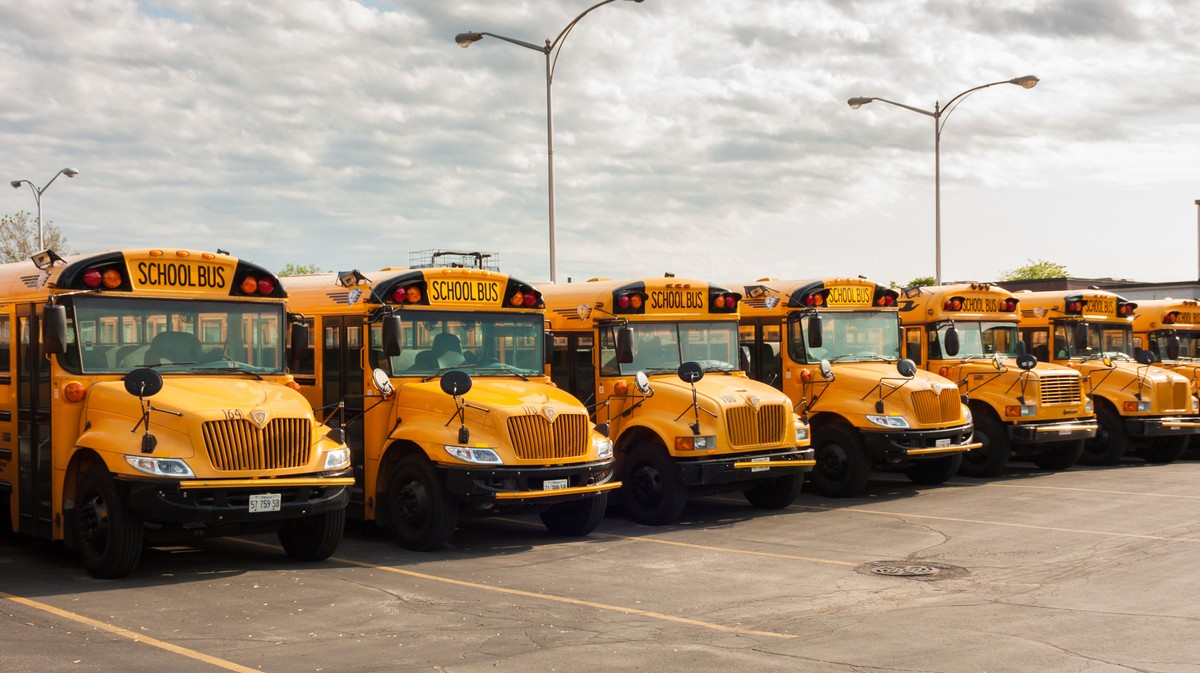Electric School Buses Can Be Backup Batteries for the US Power Grid

We often think of electricity as a one-way transaction. Need to toast a bagel, wash the sheets, or charge your phone? Your fuse box sends you the juice you need.
Electric vehicles, though, have the capacity to send power back to the electrical grid using vehicle-to-grid (V2G) technology—and that’s good news for an aging grid already operating at full capacity. Vehicle-to-grid does this by letting electric vehicle (EV) batteries switch between providing and consuming energy on an as-needed basis. As EV adoption rates steadily climb, this technology could help stabilize the electrical grid, lessen the need for new power plants, and reduce kids’ exposure to cancer-causing exhaust.
Essentially, electric vehicles can be like a backup battery for your phone, but for the entire US power grid. Enter school buses. There are approximately 500,000 buses in the US alone, and the majority of them are basically rolling cancer machines due to their diesel engines.
in 2012, the World Health Organization said diesel exhaust can definitely cause lung cancer, and might also be associated with an increased risk of bladder cancer. Meanwhile, according to the American School Bus Council, the US’s school buses consume a combined $3.2 billion worth of diesel a year. Lance Noel, a postdoctoral V2G researcher at the Center for Energy Technologies at Aarhus University in Denmark, said school buses are not only ripe for electrification, but also V2G technology because they’re only in use for a few hours at a time.
“It’s a giant battery sitting in a parking lot for at least 18 hours a day,” he told me on the phone.
Source: vice.com